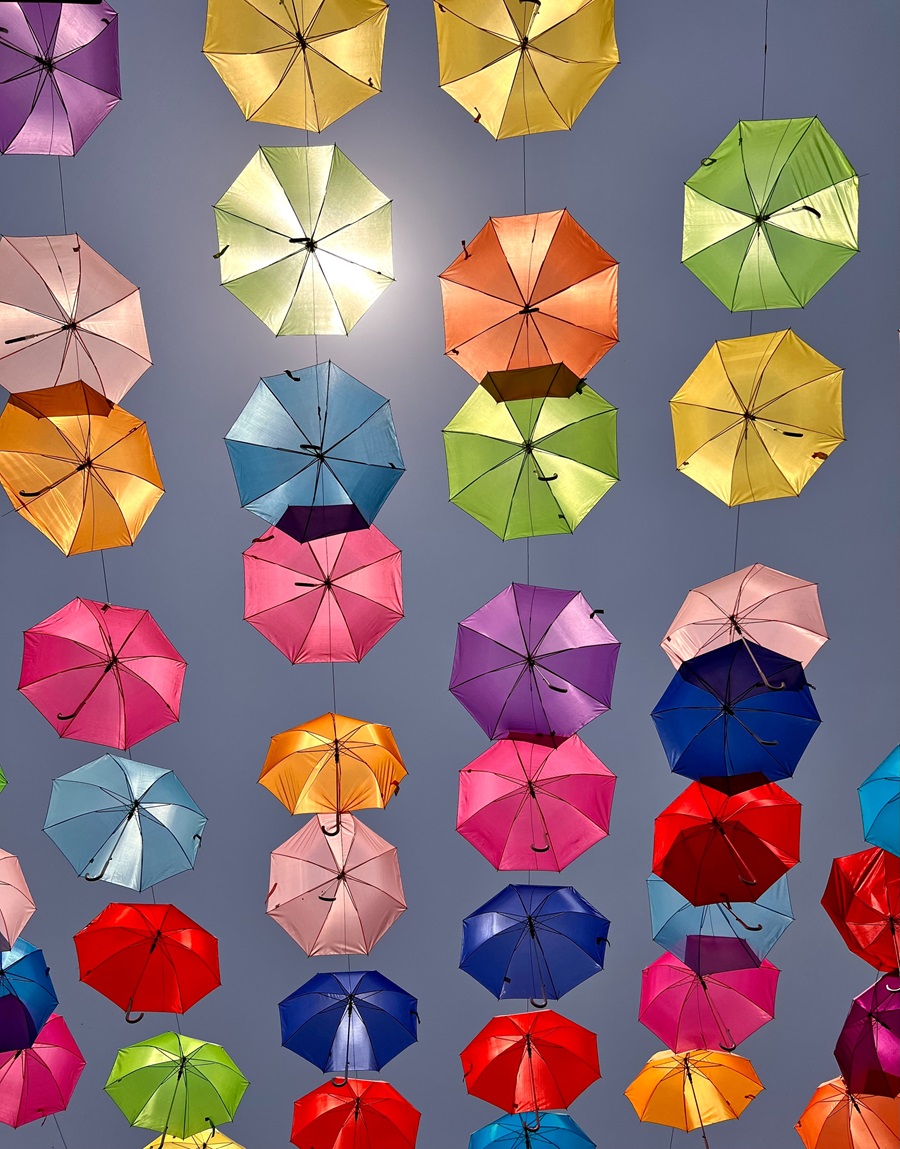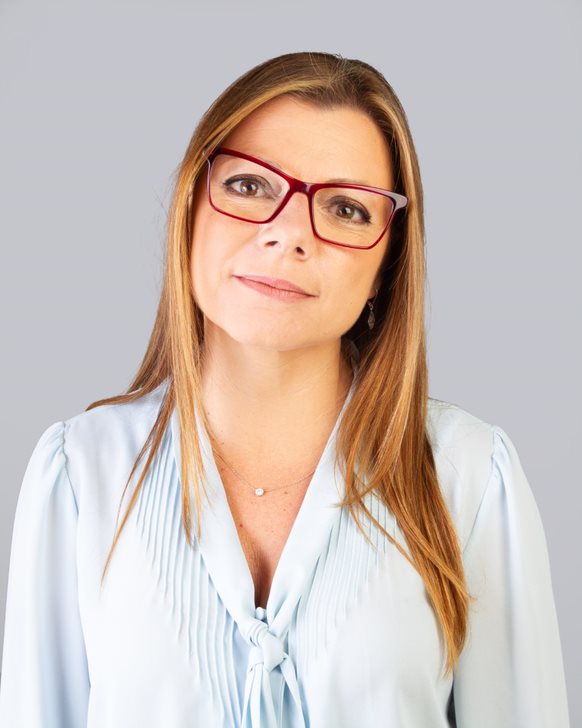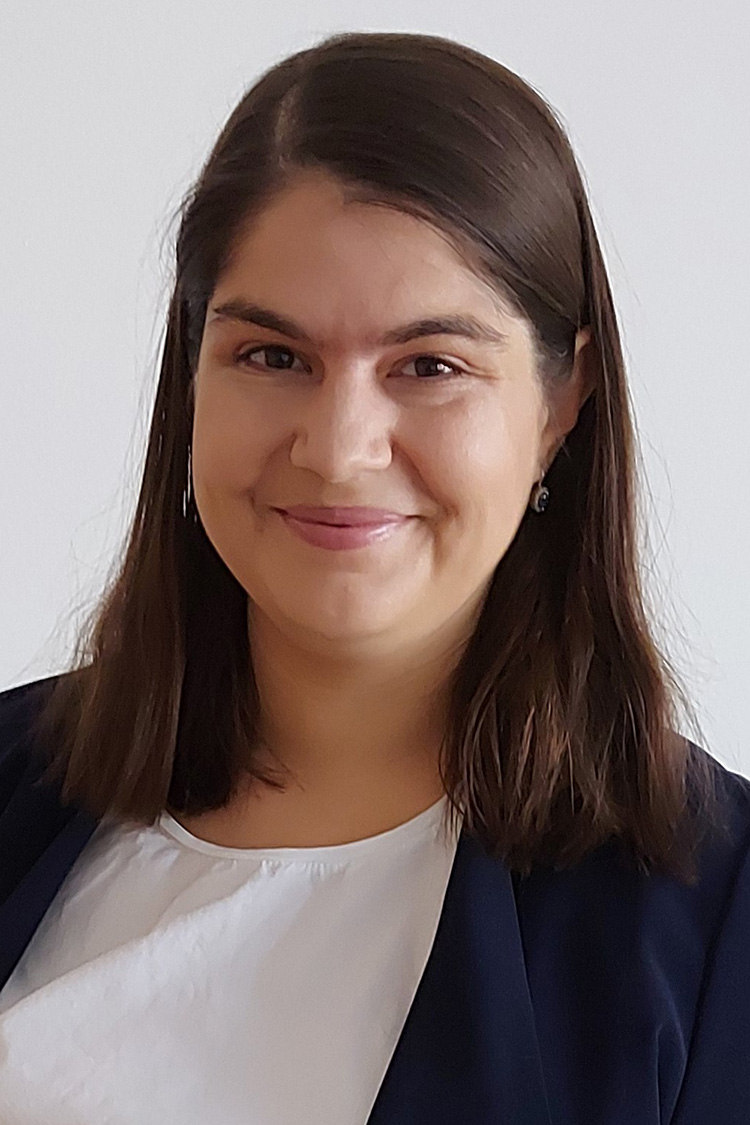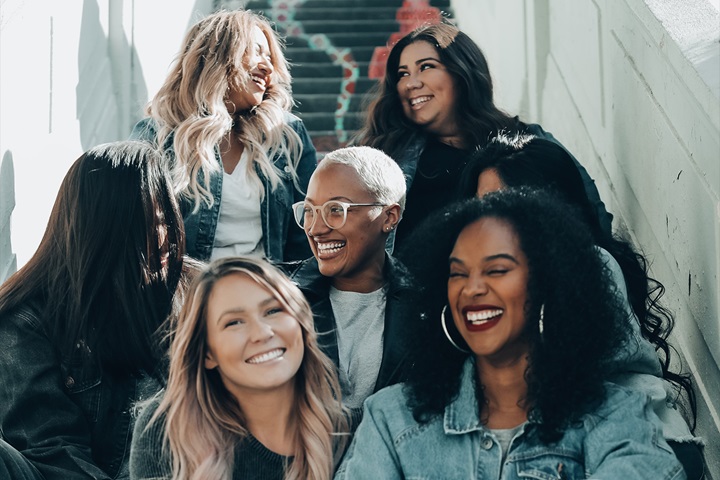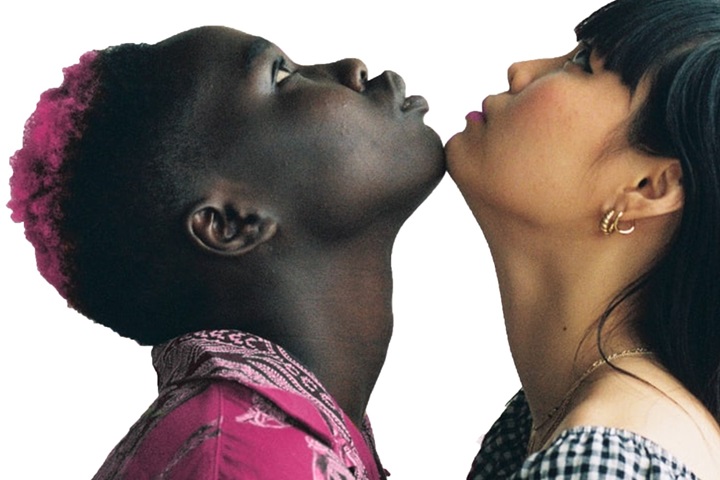This year’s Cannes Lions International Festival of Creativity held up a mirror to the industry. What is the current state of diversity, equity and inclusion inside marketing organisations and how they connect with people on the outside?
Externally, advertisers are feeling more confident in inclusive representation related to women, race and ethnic groups, and in some cases, even disabilities. Yet, on the other hand, there are acute pain points. LGBTQ+ representation has been a weak area for marketers and advertisers aiming to be inclusive, and #Pride2023 has brought this concern to new heights. This sentiment is echoed in Kantar’s Media Reactions study, which suggests over 6 in 10 marketers are confident about their organisations’ advertising avoiding stereotypes, including gender balanced content or inclusive and diverse representation, and notably confidence in producing racially balanced content has increased by 12 percentage points. However, that confidence is slashed in half when it comes to LGBTQ+ inclusive representation.
Most marketers are confident their ads are inclusive, but less so about sexuality
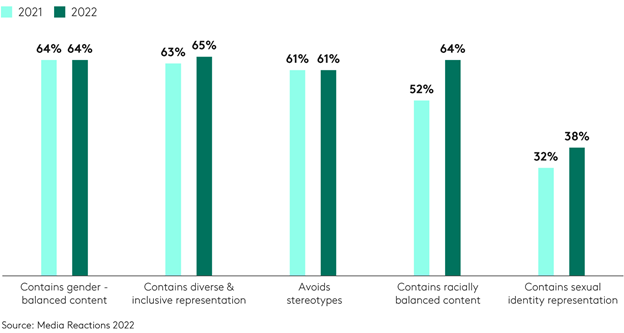
To move forward on closing inclusion gaps for people, we must look inward as well. More actions need to be taken within marketing and advertising teams organisations, whether they be marketers or agencies. The 2023 DEI census published by the World Federation of Advertisers in partnership with Kantar points to the diversity, equity, and inclusion gaps in the industry, and identifies the populations that have the worst experiences in the workplace. Employees with disabilities report having by far the worst experiences at work. Discrimination along gender, family status and age lines continue to be most common. Ultimately, Kantar’s Inclusion Index implemented in the DEI census report showed that overall, there has been no progress towards a more diverse, fair, and inclusive industry in the last two years. Luckily, there has been no regression either, in 2021, the inclusion index was 64%; now it is 63%.
Marketers are mobilised towards furthering inclusion and at the same time realise that more needs to be done. Consumers take notice of brands’ good intentions, as data from our Brand Inclusion Index shows that 7 in 10 people feel brands are making an effort to be more diverse and inclusive. As the focus on DEI during Cannes Lions and beyond showed, there are good steps in the right direction in the marketing and advertising industry – which include conquering taboo topics in mainstream advertising, making invisible disabilities more evident, or including marginalized ethnic populations. But inclusion is a journey and there’s opportunity to advance in both, visibility of under-represented populations and quality representation. Advertising has a role to play in promoting positive portrayals of people, and with it, decrease bias and discrimination.
The opportunity: Increase visibility of underrepresented groups
Brands have an opportunity to expand their audiences by showing they understand the complex identity of people today. Marc Pritchard, the Chief Brand Officer at P&G, advocates for brands to move away from “narrowly defined target groups” to ensure that they “serve all people and each person.” So, who is seen and who is rendered invisible in advertising today? Latest data from the Kantar Link database shows that there is an opportunity for brands to increase visibility of some groups. People living with disabilities are nearly unseen in advertising. According to the WHO, 16% of the world’s population have some form of disability, yet they feature in less than 2% of ads. But there are notable exemptions that bring inspiration to the industry: Vanish partnered with “Ambitious about Autism” to raise awareness about gender disparities in autism diagnoses, as autistic girls are three times less likely to receive a diagnosis than boys. This campaign was awarded with a Gold Lion in Creative Strategy and a Silver Lion in Film Craft.
Vanish & Ambitious about Autism; Me, My Autism & I
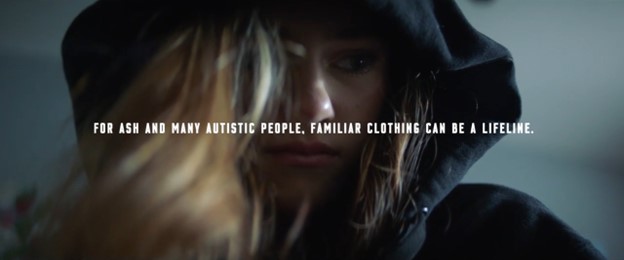
Watch here
LGBTQ+ people have also been nearly invisible in advertising, as according to Kantar Link database only 1% of ads globally show characters from the community. This has potential negative repercussions for brands now and in the future, as Sarah Kate Ellis, GLAAD President and CEO noted, “Brands that keep us invisible to appease anti-LGBTQ activists are not only missing a large and loyal consumer base today but are missing a future generation of consumers and employees who demand that brands include LGBTQ people and other diverse communities in authentic and organic ways.”
Another population, that is growing in size yet not in visibility in advertising is people over the age of 65, as only 3.5% of ads feature them. Inclusive portrayal is effective, as evidenced by Amazon Web Services, who won in Kantar Creative Effectiveness Awards earlier this year with ‘When I grow up.’ The ad steers clears of ageist cliches, and instead portrays an older character who is social, vibrant, and taking advantage of modern technology in his everyday life, cleverly done through the loving eyes of his grandson who is fascinated by his grandfather’s skills.
The next frontier: Quality of representation
Visibility acts as a prerequisite to inclusive portrayal, but it is not the end goal. To connect with consumers, brands need to portray people in multifaceted ways that reflect their complexity, and there is room to make improvements on that front. A joint study by Kantar and GLAAD showed that LGBTQ+ people believe brands should not stop at visibility and should strive to evolve how they portray them.
Portrayal of LGBTQ+ people in advertising should be more multi-faceted
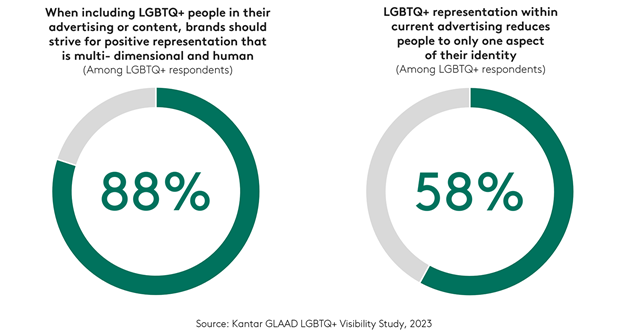
On the visibility front, there are positive signs of progress, as presence of certain groups has increased. 32% of ads now feature people with diverse skin colour and/or different ethnicities. The presence of women has also improved as 80% of ads feature women.
However, only 4% show women in aspirational roles. And this is important because the latest UN report on bias against women – the 2023 Gender Social Norms Index published in June 2023 – concluded that close to 9 out of 10 people of all genders hold fundamental biases against women, thinking men make better political leaders, or better business executives. These biases hold across regions, income, level of development and cultures - making them a global issue. Intimus,a Brazilian feminine hygiene brand by KOTEX, shares the story of Lea Campos – the first ever female soccer referee in the country and the challenges she faced as she pursued her dream. Displaying her determination and personality.
Gender stereotypes impact men negatively as well. In Cannes, the Unstereotype Alliance held a Healthy Masculinities Masterclass panel at the Kantar site that called for applying 3Ps – presence, perspective, personality – to portrayal of men in advertising, to break away from stereotypes and show men in more multifaceted ways. Movistar, a global telco provider, chose to address toxic masculinity – that often drives homophobia - through its five minute film called Shout that earned it a number of Lions.
Beyond advertising
Great advertising is not enough to be considered a fair and inclusive brand. What we discovered in Kantar's Brand Inclusion Index study is that inclusive brands have a well-thought-out DEI strategy that stems from their actions. Often, those actions have to do with product or service innovations that grant access to more people or improve the life of those who are vulnerable. Cannes Lions 2023 had several winners proving this principle. Gold Lions winner “Knock Knock” by Korean National Police campaign, that depicts an ingenious new way for domestic violence victims to seek out help. Microsoft’s campaign based on the digitalization of the ADLaM Fulani language to preserve this African culture. Apple’s “The Greatest” campaign showing the use of technology via facial expressions. Or Vaseline’s new tool “See My Skin” that allows people of colour to find information about their skin condition.
From minding the gap to closing the gap
Closing inclusion gaps within organisations and in advertising representation requires bravery, commitment, and long-term vision. This is a tall but worthwhile challenge. Inclusive marketing is an imperative for brands, to be culturally relevant and to grow with the help of underserved populations in the marketplace.
We’d love to talk to you about the value of inclusive advertising and how we can help. So please do get in touch.
